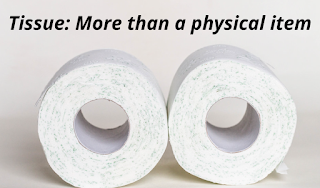How tissue is made – And why it’s good for you!
In spite of the fact that you may not consider it all the time, tissue paper items such as paper towels, restroom tissue, facial tissue, and kitchen towels – play a critical role in providing solace and convenience in our regular daily lives, both at home and far from home.
Other than the basic comfort they give us, tissue products really have an extremely positive story to tell regarding hygiene and health, environment and sustainability, and technology and science.
And while this may come across as a surprise, tissue is a surprisingly big business, with worldwide annual sales estimated to be around US$80 billion. In South Africa, tissue is among the highly demanded products as it is estimated that a family of four uses approximately one toilet roll every 1.5 days.
While this may be impressive, there are several even more important aspects of tissue paper products that are sometimes overlooked and deserve more discussion, such as the following:
Hygiene
Hygiene is the key benefit provided by tissue. Tissue products are vital for personal and household hygiene, as well as commercial and industrial cleaning.
Hygiene is considered to be the number one most important factor that influences human health, and tissue paper products excellently help to promote hygiene by preventing the spread of dirt, diseases, and illnesses.
Today, in most parts of the world, a day without the comfort, convenience, and hygiene provided by tissue paper products is unthinkable.
Easily-renewable wood fibers
Renewable natural resources are a very important topic when discussing the kind of material, like renewable wood fibers, that is used for making tissue paper products, and paper is one of the very few major industries that is based on a 100% renewable raw material.
Added to that, since papermaking fibers originally come from trees, people sometimes have the mistaken impression that this causes major environmental damage.
However, this is far from being true. In fact, most fibers come from sustainably managed forests where trees are harvested and new ones replanted just like any crop such as corn or wheat.
Furthermore, managed sustainable forests where primary fibers are grown do a great job of capturing and binding carbon dioxide, which is very important for slowing global warming.
Recycled fibers also play an important role in tissue. Coming from other grades of recovered paper like office papers or beverage cartons, recycled fibers make up about 35% of all fibers used in tissue making.
The entire lifecycle of paper products and wood fibers is very renewable and positive.
Advance technology
Tissue products are high-tech specialty grades of paper that have softness, strength, and absorbency engineered into the items.
Tissue sheets weigh as little as 13 g/m² and are produced in jumbo rolls weighing several tons and cost from R6 600 per ton or more.
These jumbo rolls are then converted on equally-impressive winding, embossing, printing and packaging machines into the smaller rolls and folded products that we use.
Added to that, advanced science and technology are applied to make this happen. The field is called paper engineering, and it involves many scientific fields including chemistry, physics, mathematics, and biology.
Food for thought for next time you use tissue paper
Regardless of whether or not you are an insider working with the tissue business, or an outsider like a member of the general public who knows nothing about this industry, the next time you use a tissue paper product, give a little thought to the above points.






Comments
Post a Comment